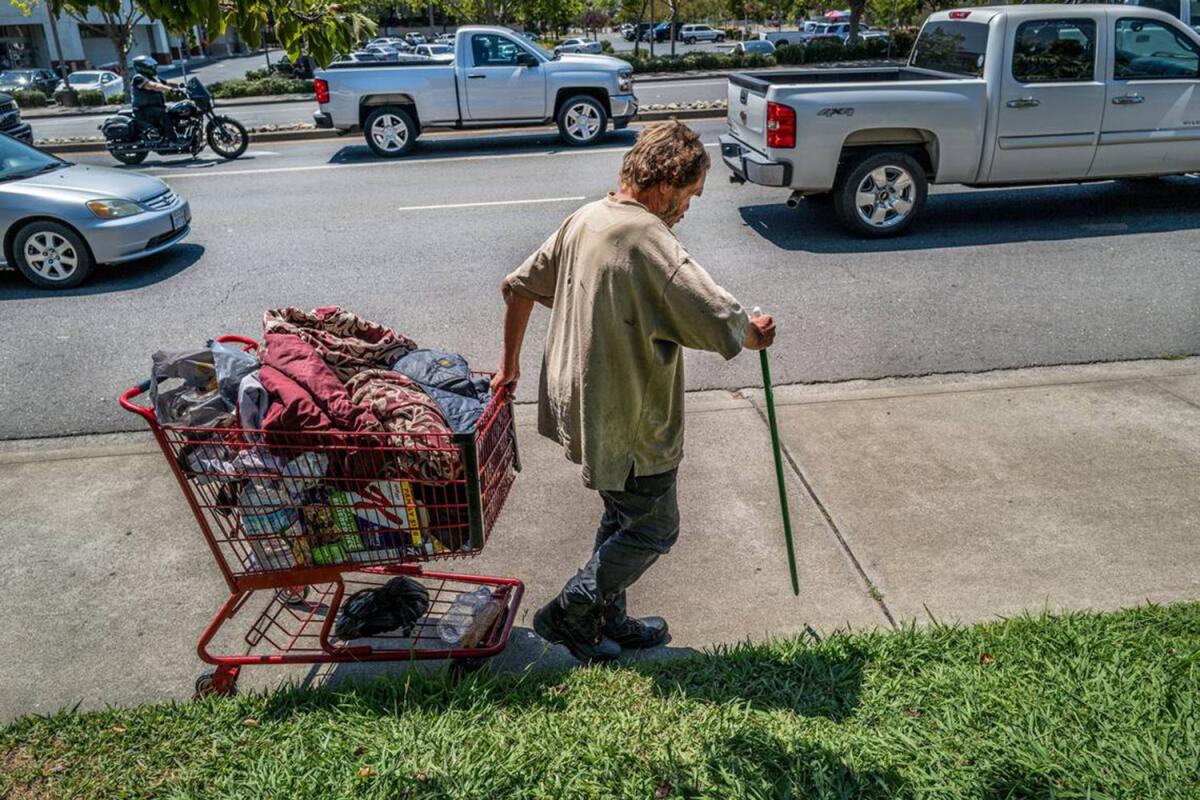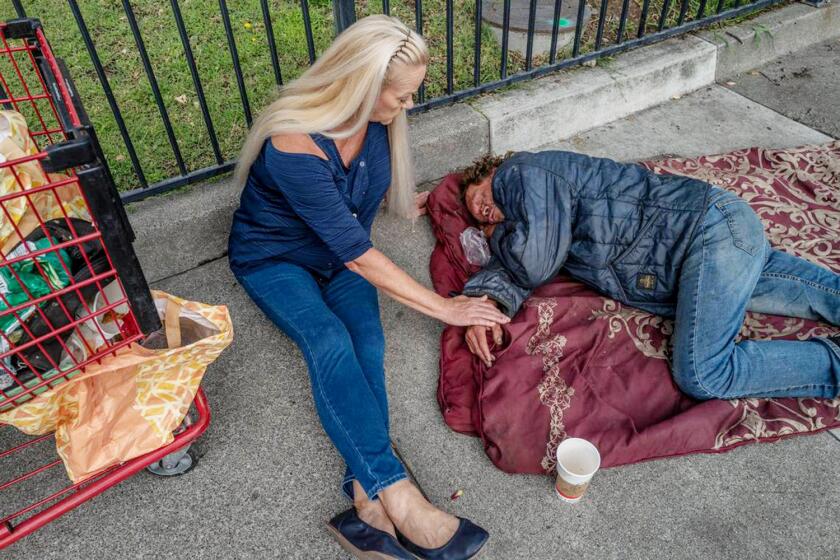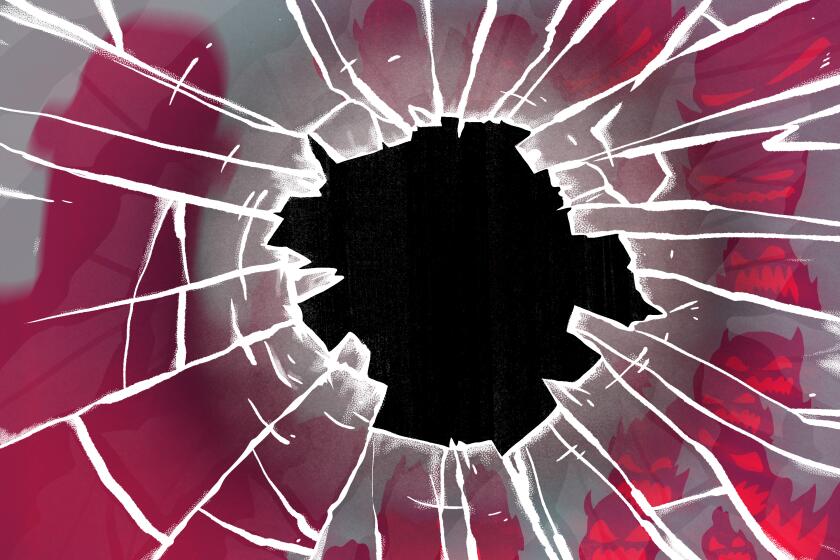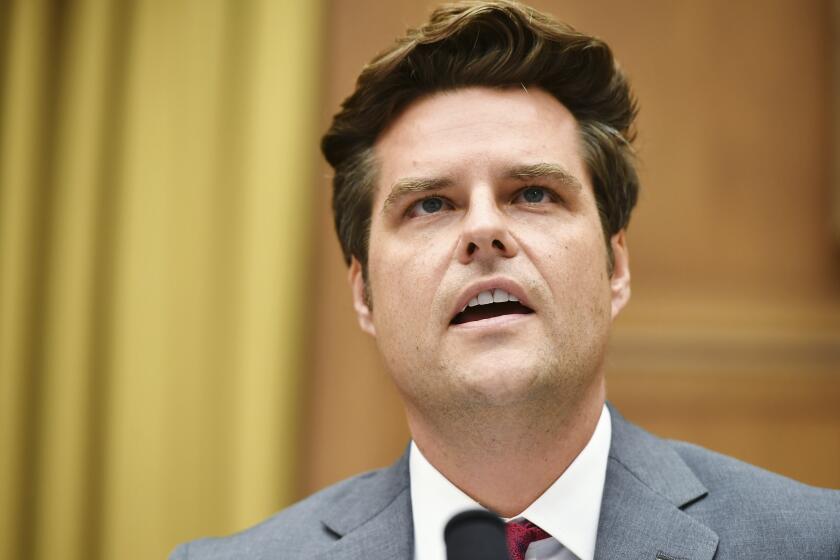Opinion: California needs new rules as it forces more mentally ill people into treatment

California law has tried for almost 50 years to protect people with mental illness from forced treatment, and for just as long, critics have said that the state is leaving mentally ill people without treatment, abandoning them to die on the streets. Last week, the critics’ arguments won out, as the Legislature unanimously passed SB 43, which would allow the state to force more people into mental health care or substance use treatment.
Gov. Gavin Newsom appears likely to sign the bill. Legislators are right that California needs a new approach. But for the bill to help the many Californians who desperately need care, the state needs to enact the law carefully and consistently — drawing on available research and the expertise of people who work in, or have been through, the system.
CARE Court, California’s plan for helping those with severe mental illness, is under attack by civil rights groups. But families fighting to help their loved ones say compassion demands intervention.
As a sociologist who has conducted hundreds of interviews and shadowed professionals throughout the state, I’ve seen firsthand how people who need the most help from multiple systems often fall through the cracks of all of them.
The new law seeks to address these gaps by expanding the legal standard for a conservatorship, a legal tool that allows a third party, usually a county public guardian, to place someone in a psychiatric facility and obligate them to take medication. The standard is “grave disability,” which now is limited to an inability to meet one’s need for food, clothing and shelter because of a mental illness. Under the new law, individuals who are unable to ensure their own medical care and personal safety could also be taken into state custody. It also would allow conservatorships on the basis of a severe substance use disorder.
California’s probate conservatorship system can too easily be abused, just like the people it is supposed to protect.
Advocates for reform envision that these changes will provide legal leverage to push providers to finally care for some of the most vulnerable people in the state — including those who present with expensive needs and no way to pay. It is also seen as a tool to address a small part of the homelessness crisis in California, if it can connect severely mentally ill unhoused people with care.
Yet the dangers in this bill are evident. Even aside from civil liberties concerns, studies on the effectiveness of involuntary treatment in improving symptoms are inconclusive. Hospitalization can even be counterproductive: Significant numbers of people leave psychiatric units traumatized, suicidal and uninterested in further treatment.
Britney Spears’ plight shows that conservatorship laws need reform to ensure that they don’t harm those they are supposed to protect.
Clinicians, family members and some patients can point to situations in which conservatorship was a life-saving intervention, but hard data that it can address substance abuse or homelessness are virtually nonexistent. And yet the individuals targeted by SB 43 have often turned down, or been unsuccessful in, voluntary services or supportive housing.
In short: Expanding conservatorships isn’t an evidence-based policy. It’s a risky experiment taken in a desperate moment. Getting it right will require strategy, leadership and oversight from state government.
First, the state needs to provide clear guidance to carefully circumscribe the situations in which conservatorships are, and are not, appropriate. Proponents of reform have often emphasized seemingly clear-cut cases, but deciding whether someone with mental illness should be conserved for failing to manage their diabetes or turning down chemotherapy is more complicated.
A UCLA nursing professor says a lack of community-based resources results in backups in hospital emergency rooms and acute care facilities meant to stabilize patients.
The state needs to convene a broad range of stakeholders to flesh out the new definition of “grave disability” and provide continuous training on best practices for the key actors in the conservatorship system, including clinicians, judges and law enforcement.
Second, California should couple expanding the number of people under conservatorship with more narrowly tailoring the restrictions people experience within this type of care. Grave disability, one clinician told me, isn’t a “light switch.” Even if someone loses the right to decide where they live or whether to take medication, they should be empowered to make decisions across as many other domains of life as possible.
When patients tell me that “the algorithm is hacked,” I cannot help but agree. Yes, your phone is listening to you, the camera on your laptop is watching you and online ads are predicting what you will buy.
Even involuntary treatment requires buy-in from patients to be effective over the long term. Yet in interviews, I constantly heard patient complaints about psychiatric facilities that denied even the smallest dignities, like choosing what movie to watch or eating a bag of chips. The state could help promote choice and reduce coercion by ensuring that all conservatees have a chance to fill out a psychiatric advance directive, making their preferences clear to all the professionals serving them.
Minimizing coercion also means moving people into less restrictive levels of care as fast as possible. Although many insist California doesn’t have enough locked beds for the seriously ill patients who need them, studies have consistently shown that many of the beds that do exist are occupied inappropriately by people who no longer need acute care but have nowhere else to go.
Most sub-acute facilities in California are private and for profit; clinicians have to engage in what one psychiatrist described as a “beauty contest” to persuade these facilities to admit their clients. Regulators could ensure that when it comes to being admitted to lower levels of care, patients are prioritized by need, not profitability.
Our son has schizoaffective disorder with depressive episodes. He was arrested in L.A. for breaking windows, jailed, found competent and released pending a court date. Things did not go well.
Finally, the state must set clear metrics for evaluating SB 43 and be prepared to reconsider the approach if they are not met. One factor to address: the shocking racial inequities in who is subject to involuntary treatment. (In San Francisco, half of individuals with eight or more involuntary treatment episodes in the past year are Black. Only 6% of the city is Black.)
Ideally, conservatorship breaks people out of a cycle of ineffectual and traumatic coercion and gets them onto a path to more enduring recovery. If the law works as its advocates intend, it ultimately ought to reduce California’s high rates of short-term involuntary hospitalizations. If it goes awry, it could turn the clock back to the dark days of mass institutionalization. The outcome hinges entirely on how SB 43 is put into action.
Alex V. Barnard, an assistant professor of sociology at New York University, is the author of “Conservatorship: Inside California’s System of Coercion and Care for Mental Illness.”
More to Read
A cure for the common opinion
Get thought-provoking perspectives with our weekly newsletter.
You may occasionally receive promotional content from the Los Angeles Times.
















